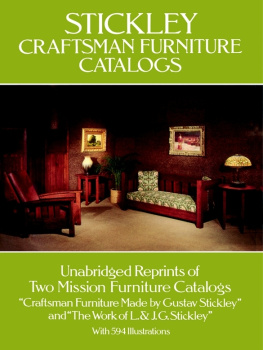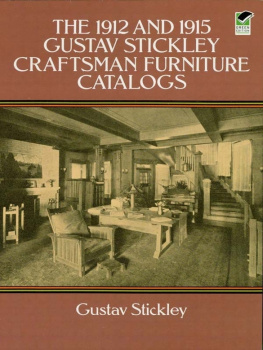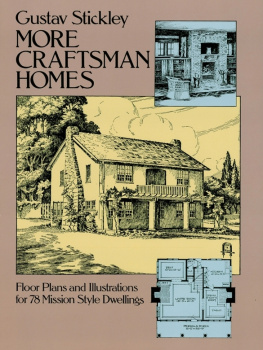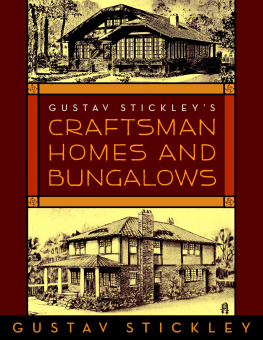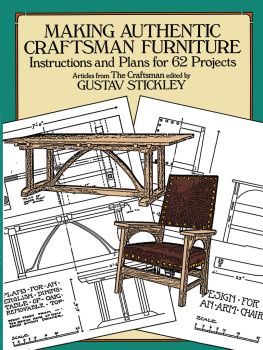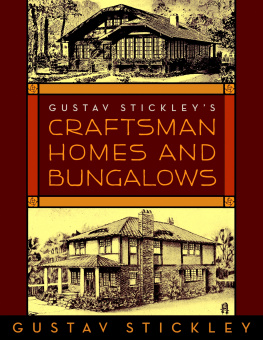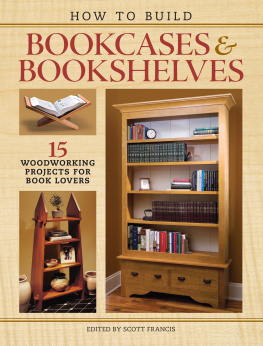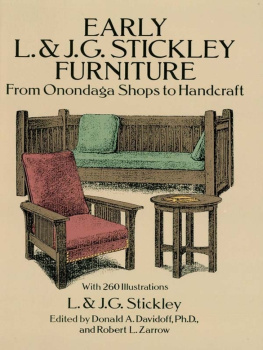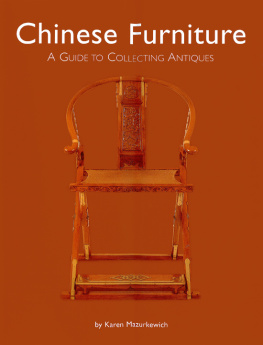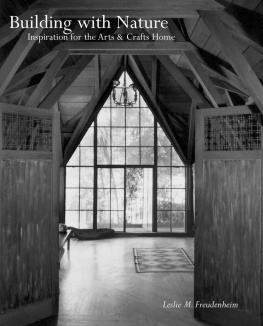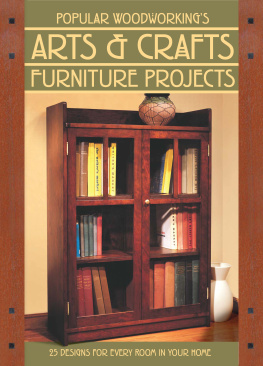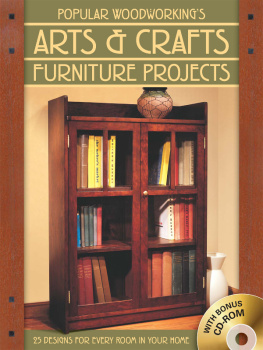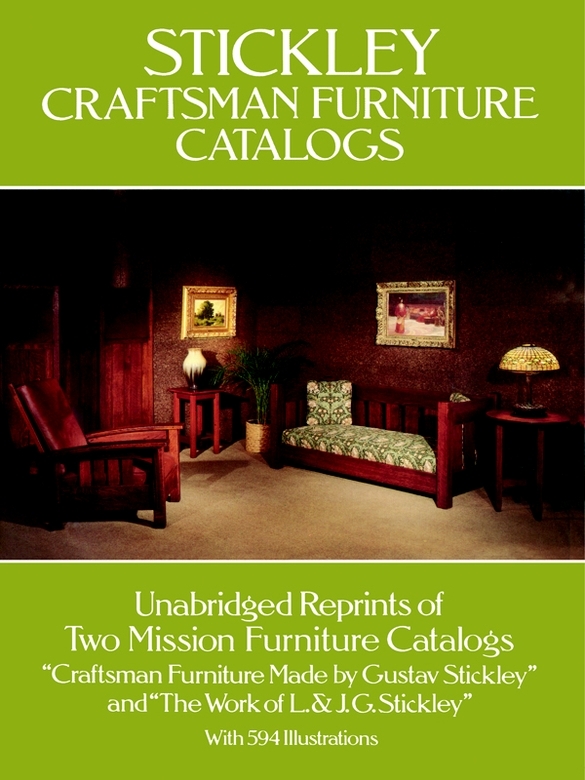CRAFTSMAN FURNITURE
A NYBODY who knows Craftsman furniture has no difficulty in perceiving that the principles upon which it is based are honesty and simplicity. This is quite true, for when I first began to make it I did so because I felt that the badly-constructed, over-ornate, meaningless furniture that was turned out in such quantities by the factories was not only bad in itself, but that its presence in the homes of the people was an influence that led directly away from the sound qualities which make an honest man and a good citizen. It seemed to me that we were getting to be a thoughtless, extravagant people, fond of show and careless of real value, and that one way to counteract this national tendency was to bring about, if possible, a different standard of what was desirable in our homes.
I suppose it was because I began as a farmer boy and got my training for the work I was ultimately to do by doing as a matter of course the thing which had to be done, that I grew up with the habit of going at things in a natural way. The farmer boy is not given to theorizing about his work, but he soon learns to accept without question the fact that certain things have to be done and that the best way is for him to get right at it and get them done as soon as possible.
Therefore, when the idea came to me that the thing for me to do was to make better and simpler furniture, I naturally went at it in the most direct way. Having been for many years a furniture manufacturer, I was, of course, familiar with all the traditional styles, and in trying to make the kind of furniture which I thought was needed in our homes, I had no idea of attempting to create a new style, but merely tried to make furniture which would be simple, durable, comfortable and fitted for the place it was to occupy and the work it had to do. It seemed to me that the only way to do this was to cut loose from all tradition and to do away with all needless ornamentation, returning to plain principles of construction and applying them to the making of simple, strong, comfortable furniture, and I firmly believe that Craftsman furniture is the concrete expression of this idea.
Because of the sturdiness and beauty of our American white oak, I chose it as the best wood for the kind of furniture I had in mind, and the style, such as it was, developed naturally from the character of the wood and the application to it of the most direct principles of construction. The result was that I soon found that there was a quality in my plain furniture which took hold of nearly all thinking people as it had taken hold of me, and that in giving expression to what might have been considered an impractical ideal under present-day conditions, I had hit upon an idea which was destined to have a far greater success than even I had hoped for it.
The first pieces of Craftsman furniture were completed in 1898 and then for two years more I worked steadily over the development of forms, the adjustment of proportions and the search for a finish which would protect the wood and mellow it in color without sacrificing its natural woody quality. Then in 1900 I introduced Craftsman furniture to the public at large by exhibiting it at the Furniture Exposition in Grand Rapids, Michigan. The result showed that I had not been mistaken in supposing that this,the first original expression of American thought in furniture,would appeal strongly to the directness and common sense. of the American people. From the time of that first exhibition Craftsman furniture grew rapidly in favor, and after the Pan-American Exposition in 1901 its success was assured.
BEGINNING OF METAL AND LEATHER WORK
B UT this success carried with it the obligation to go on and develop still further the basic principles which had found expression in the furniture. The first need was for metal trim which would harmonize in character with the furniture, as none of the glittering, fragile metal then in vogue was possible in connection with its straight severe lines and plain surfaces. So I opened a metal work department in The Craftsman Workshops, and there we made plain, strong handles, pulls, hinges and escutcheons of iron, copper and brass, so designed and made that each article fulfilled as simply and directly as possible the purpose for which it was intended, and so finished that the natural quality of each metal was shown frankly as was the quality of the wood against which it was placed. Also,for Craftsman furniture is very exacting in its requirements, leather was needed for cushions, table tops and seats for chairs and settles, and sturdy fabrics interesting in color, weave and texture, had to be found for the same purpose. This necessitated a further expansion to take in the special treatment of leathers so that they harmonize with the Craftsman idea in maintaining all their leathery quality unimpaired, while giving long service under hard wear; and also to include a fabric department, that the textiles used in connection with the furniture would be sure to have the qualities that would harmonize with it.
GROWTH OF OUR DECORATIVE SCHEME
T HE fact that the furniture so imperatively demanded the right kind of metal work and fabrics naturally opened the way to a more extended use of these departments in the making of things intended for general furnishings. While Craftsman furniture is very friendly in its nature and fits in comfortably with any good simple scheme of interior decoration and furnishing, it yet holds out a strong temptation to develop an entire scheme of furnishing along the same lines. So we began in the metal shop to make electric lighting fixtures, fireplace fittings, trays, candlesticks and all manner of useful household articles, designed on the same general principles as the furniture and therefore just as essentially a part of one general scheme of furnishing. The fabrics in their turn were made into curtains, portires, pillows, scarfs, centerpieces and the like, and decorated with needlework and applique in strong simple designs and colorings which belonged to the oaken furniture as naturally as the leaves on a tree belong to the trunk. So, step by step, we grew naturally into the designing and arranging, first of rooms, then of entire schemes of interior decoration, and lastly the planning and building of the whole house.
THE INDIVIDUALITY OF CRAFTSMAN FURNITURE
A S I have already said, Craftsman furniture is built for all manner of uses and its construction is so thorough that it will last for the lifetime of the oak of which it is made, which means the lifetime of several generations of men. Being designed upon the most natural lines and made in the most natural way, there is little room for change in the style, and that the style itself has made good its appeal to the American people is best proven by the fact that, during the twelve years it has been upon the market, it has remained unchanged, except for such modifications and improvements as evidence a healthy growth along normal lines of development. It is impossible to get far away from the structural lines which declare the purpose and use of the piece, and the proportions that best serve that purpose and use are the proportions which it should have. As to the matter of decoration, it will grow of itself in time, for true decoration is always the natural expression of the thought and desire of the people who own and use the things made, combined with the desire of the craftsman to express his own idea of beauty. I am so sure of this that I have been content to leave the furniture absolutely plain until the form of decoration which inevitably belongs to it shall come.

